

If you are an archer/bowhunter, then you know the feeling of watching your arrow cut through the air and land right where you want it to. It’s a soothing feeling and, for myself, has become somewhat of an addiction. Achieving the accuracy that you strive for doesn’t come free of charge though. It takes much practice and dedication in order to crush your archery goals. Some folks are just naturals and will be busting the bullseye at 60 yards in a heartbeat. Other people have to work a bit harder. Wherever you fall, I think there are a few things that we all should keep in mind while we prepare for our future hunts.
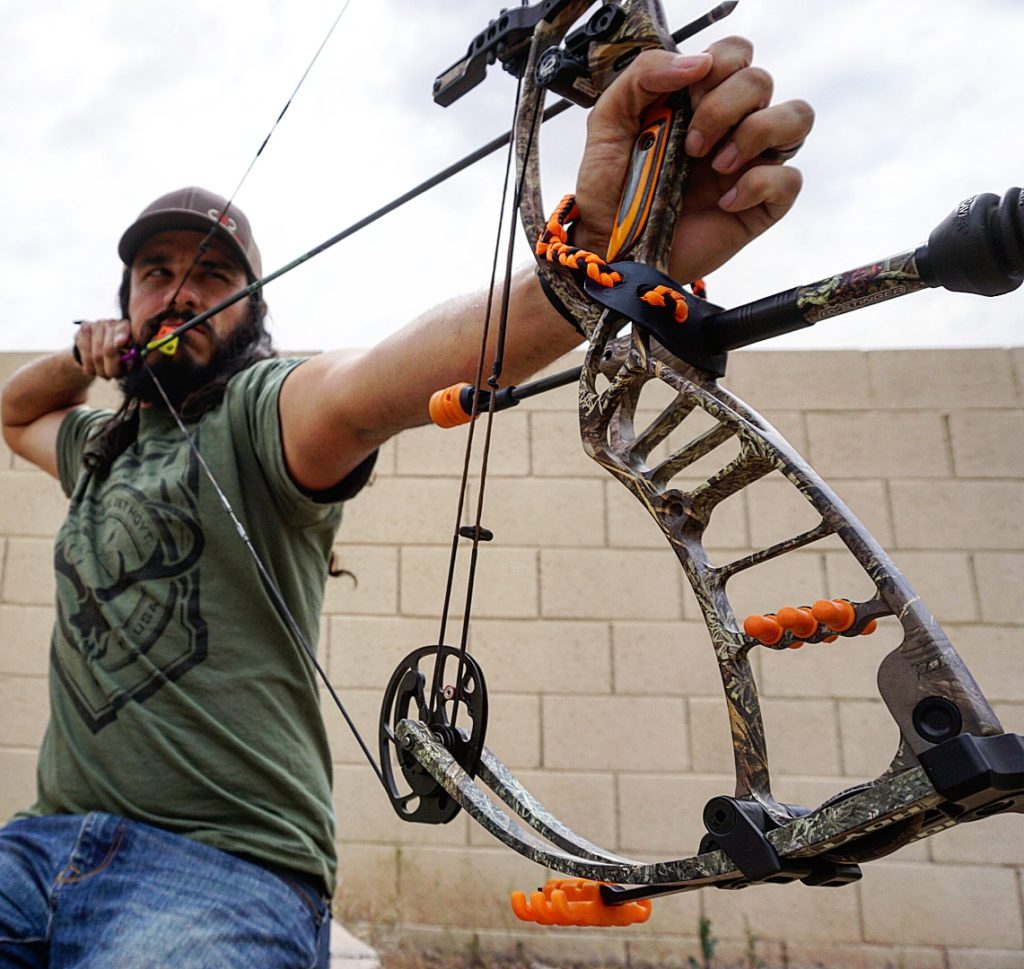
The first area I want to talk about is proper grip. When I hear the word “grip” it makes me think of grabbing onto something tightly. This is not at all how you want to look at this word when it comes to archery. Even though you might see a lot of people gripping their bows quite tightly when shooting, get that out of your head. You actually want to have a relaxed grip on your bow. Not squeezing, but just holding. By doing this, you are going to ensure that you don’t throw the arrow off course once you shoot. By having a “death grip” you increase the chances of torquing the bow slightly at the shot.
The way that I was taught to hold a bow, was to place the grip along your lifeline. Basically, from the center of the inside of your wrist, and up towards the section of your hand in between your thumb and pointer finger. In this area the bow can rest in your hand naturally. As far as how you hold the bow from here, I recommend resting your pointer and middle finger along the front of the grip. The business end, if you would. I see a lot of folks shooting with an open hand in hopes that they don’t interfere with the shot by gripping their bow. What better way than to not grip at all right? If someone could actually pull that off, it would probably work out for them. The thing that happens, if you watch carefully, is right when their bow goes off and the arrow starts heading downrange, what was once an open hand quickly turns into a closed hand, so they don’t drop their bow. This is unnecessary movement that is not aiding in the flight of their arrow. You might not notice at the 20 yards you practice in your backyard, but at 80 yards, I would think differently.
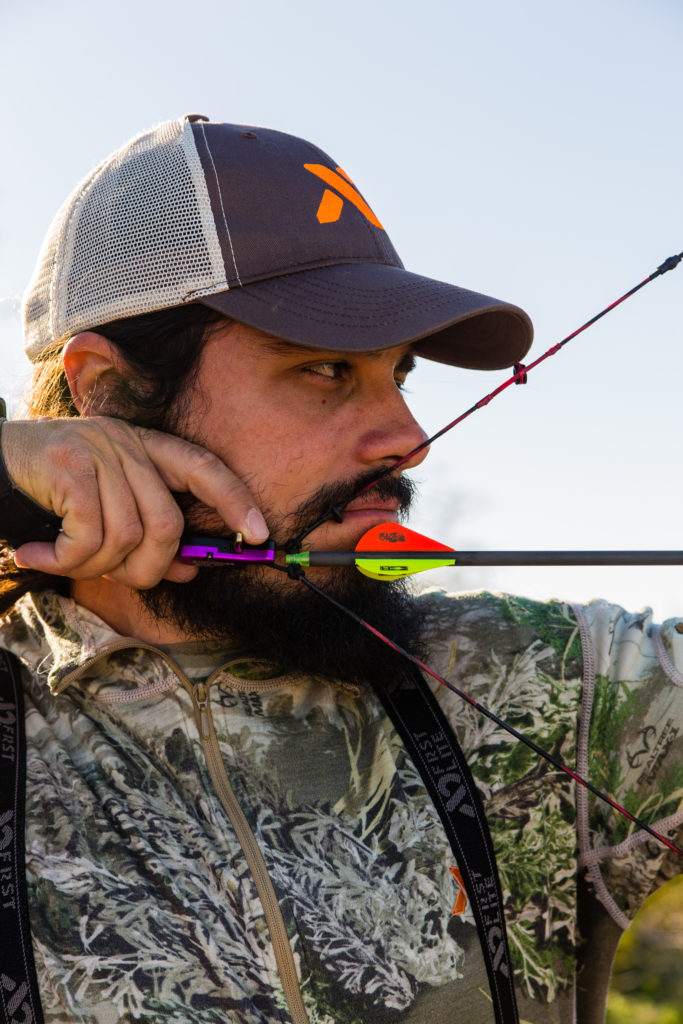 Anchor points are these lovely little things that help us maintain consistency throughout each of our shots. I consider them little helpers or guides. An anchor point is a specific point of contact between your string, release, and you at full draw. For instance, one of my anchor points is a kisser button on my string. A kisser button is a small substance placed on a certain part of the string, meant to rest in the corner of your mouth at full draw. This ensures that my head is in the same spot every single time that I am at full draw. My groups tightened dramatically after I started using a kisser button. Another one of my anchor points is placing the string on the tip of my nose at full draw. So now, I have the kisser button in the corner of my mouth and the string on the tip of my nose. I have seen some folks place their release or knuckle along a certain part of their cheek. Whatever it is, make sure you do it over and over again, if it is working for you. Having a reliable set of anchor points is going to end with you anchoring way more arrows in the center of your target. Consistency is the name of the game.
Anchor points are these lovely little things that help us maintain consistency throughout each of our shots. I consider them little helpers or guides. An anchor point is a specific point of contact between your string, release, and you at full draw. For instance, one of my anchor points is a kisser button on my string. A kisser button is a small substance placed on a certain part of the string, meant to rest in the corner of your mouth at full draw. This ensures that my head is in the same spot every single time that I am at full draw. My groups tightened dramatically after I started using a kisser button. Another one of my anchor points is placing the string on the tip of my nose at full draw. So now, I have the kisser button in the corner of my mouth and the string on the tip of my nose. I have seen some folks place their release or knuckle along a certain part of their cheek. Whatever it is, make sure you do it over and over again, if it is working for you. Having a reliable set of anchor points is going to end with you anchoring way more arrows in the center of your target. Consistency is the name of the game.
This is a nasty habit that some people don’t even realize they are doing. Punching the trigger is when you are literally smacking the trigger with your finger, if you happen to be using a trigger release. Similar to a firearm, you want to gently pull the trigger. Again, this is going to create less movement and impact upon the shot. The less movement during that moment, the tighter your groups are going to get. So tight that your arrow bill might drastically increase, due to you robin hooding more arrows. There are some folks out there that are an exception and actually shoot very well by punching the trigger, but generally, you want to try to stay away from it. There are also certain hunting situations where you might HAVE TO punch the trigger in order to get the shot off at the right time. Try not to make a habit of it though, because it might hurt you in the long run. If you aren’t sure if you are punching the trigger, take a video of yourself or have someone with some experience watch you. You might be surprised at what you find out. What is that old saying? Familiarity breeds contempt.
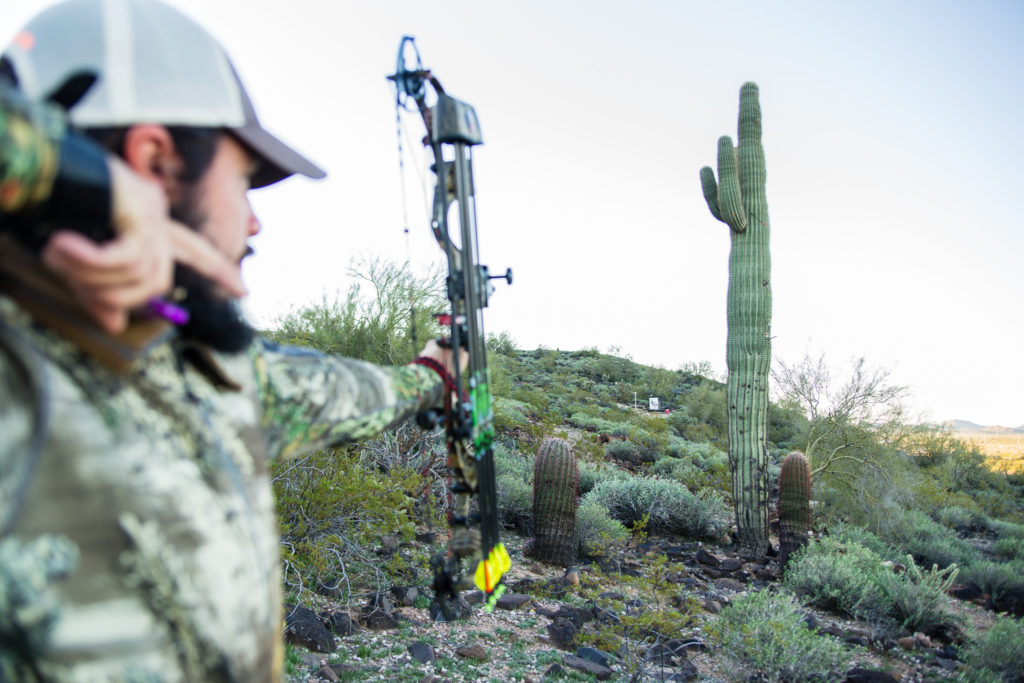
So, we have talked about everything from the gripping of your bow to actually being at full draw and then the pulling of the trigger. What comes next? Following through your shot. I am most familiar with this phrase from my days as a bowler. When I was younger, I was quite involved with the sport, taking part in everything from leagues to out of state tournaments. The thing my dad told me the most was, “stop lifting your head and follow through with your shot.” The same applies to archery. A lot of folks will immediately want to look at where their arrow hits or even want to watch the flight of their arrow, similar to how I wanted to see where my ball hit the pins or how it rolled down the lane when I was younger. This all sounds cool, but can really have an impact on where that arrow ends up. You want to remain as relaxed as possible throughout your whole shot sequence, from the time you draw back, to when that arrow smacks the target. Don’t drop your bow arm right when your arrow goes off to see where it is going. Maintain your form until the arrow hits its mark. If your bow is properly sighted in and you do this, then you will know where that arrow is going before it even gets there.
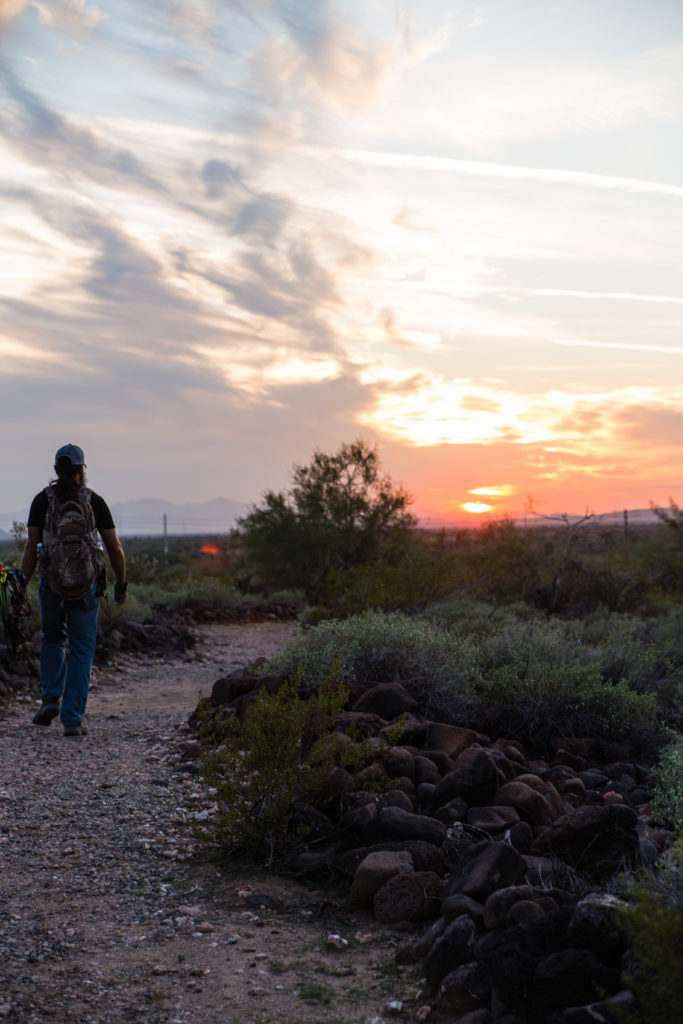
I am by no means an archery coach or an instructor. I am simply a bowhunter and am mostly self-taught. The things that I have mentioned above are merely things that either, I myself have been helped by, or someone I know has been helped by. You might not have any of these issues, but just because you don’t now, doesn’t mean that you shouldn’t be paying attention to these things now and in the future. I always tell people that even if they don’t plan on actually hunting, archery is just plain fun. It’s a great way to get outside, turn off Netflix, and let that sump in your couch heal. Good luck out there and shoot straight.
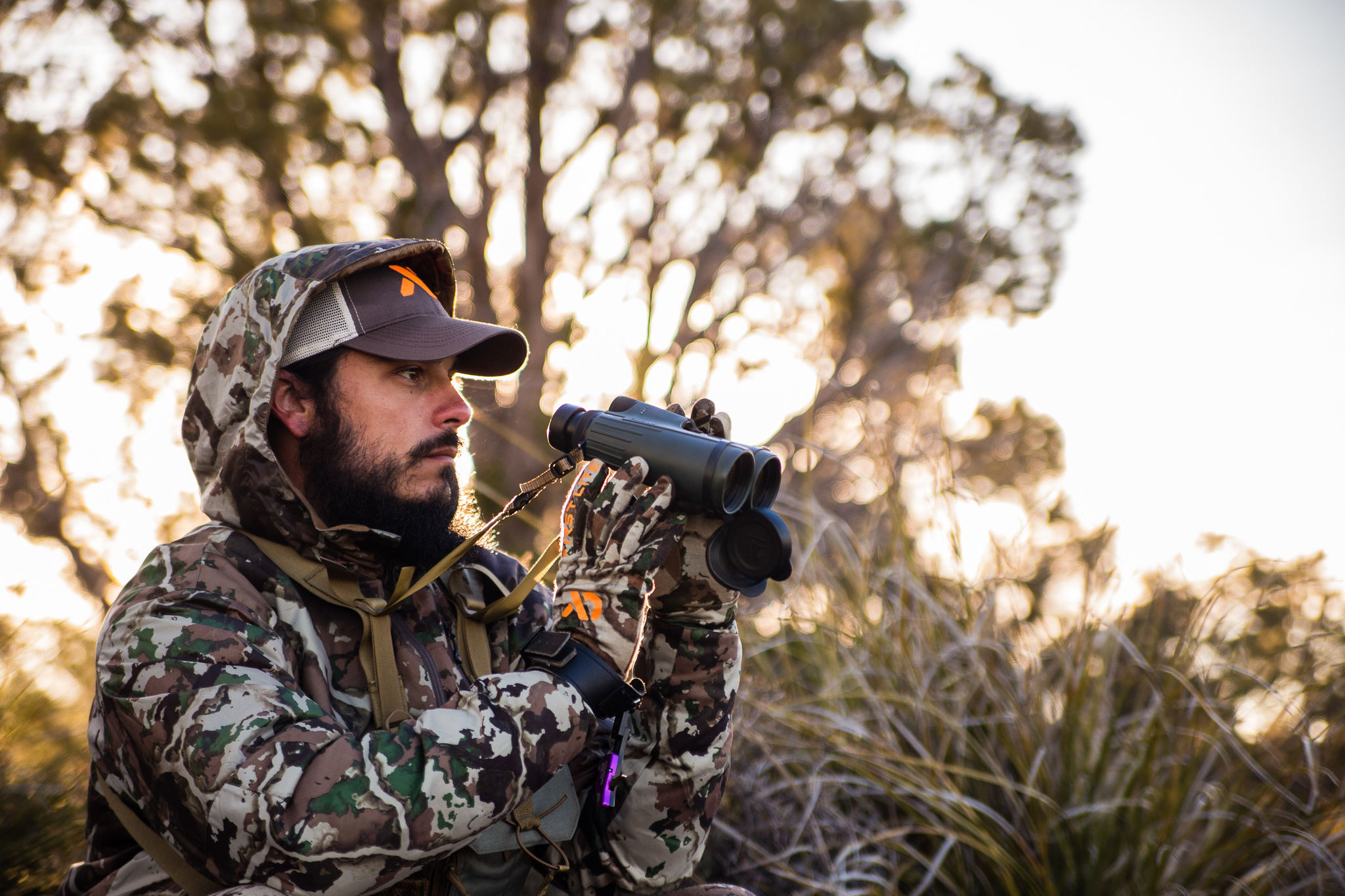

Copyright 2019 Dialed In Hunter
Design by NXNW.